The prehistory of the translation
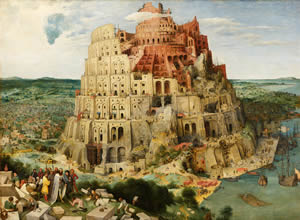 The history of translation begins symbolically with the destruction of the legendary Tower of Babel so ending the universal language and the birth of different languages.
The history of translation begins symbolically with the destruction of the legendary Tower of Babel so ending the universal language and the birth of different languages.
People started to look for ways to establish an oral or written communication, hence the birth of translation.
The era of Scribes
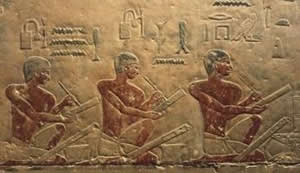 Researchers mention that writings on translation go back to the Egyptian civilization and to Mesopotamian early as 3000 B.C.
Researchers mention that writings on translation go back to the Egyptian civilization and to Mesopotamian early as 3000 B.C.
The earliest translators are the scribes, public official and administrative clerks occupying prominent positions within the civilization of belonging.
In ancient Rome, the translation became one of the most important tools to facilitate the process of assimilation of other cultures. Livio Andronico, Plautus, Ennius just to name a few particularly significant , were the first translators.
Cicero and Horace (first century BC) were the first theorists who distinguished between word-for-word translation and sense-for-sense translation.
The Translation of the Bible
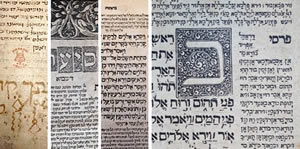 A significant part of the history of translation in the West has to do with the translation of the scriptures. The first certified written translations are in fact those of the Bible. A changing step in translation development was marked by St Jerome (fourth century CE), translator of the Bible. Later on, the theories and practice of translation remained subject the pressure of the need to spread the Gospels
A significant part of the history of translation in the West has to do with the translation of the scriptures. The first certified written translations are in fact those of the Bible. A changing step in translation development was marked by St Jerome (fourth century CE), translator of the Bible. Later on, the theories and practice of translation remained subject the pressure of the need to spread the Gospels
The contribution of the Arabs
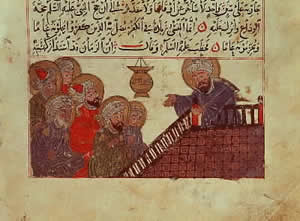 After the death of the prophet Muhammad in 632, the Arabs expanded in Europe and beyond, becoming the main custodians of Western culture. Eager for knowledge and the communication with non-Arabic speaking communities they encouraged translations of many Greek and Roman writings and add their knowledge in science. Many translation schools were established in Baghdad and Cordoba. Thanks to them, the knowledge of the antiques didn't disappear.
After the death of the prophet Muhammad in 632, the Arabs expanded in Europe and beyond, becoming the main custodians of Western culture. Eager for knowledge and the communication with non-Arabic speaking communities they encouraged translations of many Greek and Roman writings and add their knowledge in science. Many translation schools were established in Baghdad and Cordoba. Thanks to them, the knowledge of the antiques didn't disappear.
The classicism from d'Ablancourt to Pope
Between the seventeenth and eighteenth century the theory of translation is dominated by the French taste for "belles infidèles" (beautiful but unfaithful). Pierrot d'Ablancourt translator of Tacitus, does not "stick to the author's words, nor even to his thoughts" but he arranges the material to achieve the same effect that the author had in mind and "after the fashion of our time" On the other hand, Piere-Daniel Huet fiercely criticized them in 1661, urging the translators to adapt themselves to different authors and styles, reviving the original text as precisely as possible.
Translation for Goethe, Humboldt, Schleiermacher
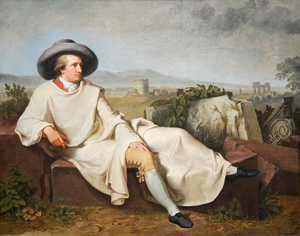 In the age of German Romanticism the problem of translating is both philosophical and intellectual. The direct experience as translators brings Goethe, Humboldt and Schleiermacher to regard translation as communication across cultures: the translator's language must adjust to the diversity of the original literary text.
In the age of German Romanticism the problem of translating is both philosophical and intellectual. The direct experience as translators brings Goethe, Humboldt and Schleiermacher to regard translation as communication across cultures: the translator's language must adjust to the diversity of the original literary text.
Goethe distinguishes three kinds of translation:
• Literalism (word-for-word) or prosaic translation. It makes the foreign land familiar according to our own way of thinking, inevitably depriving the original text of its peculiarities and its spirit.
• Reformulation (a kind of self-fidelity) or parodic translation in which there is an attempt to place oneself in the circumstances of the foreign land, but really it is only a matter of appropriating the foreignness and portraying it according to our own way of thinking.
• Re-creation, surely the " highest mode" and "the final" the translation attempts to be "equal" and identical with the original, reproducing style, structure, grammar, and idiom of the original, to enjoy it at its most.
The Age of Enlightenment
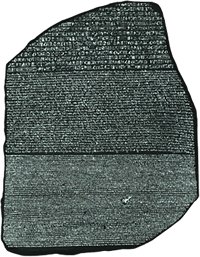 The age of the Enlightenment and the Industrial Revolution were marked by a proliferation of translations in all sectors, in particular technical and scientific. Many dictionaries monolingual and bilingual, general and special. The work of Champollion who in 1822 reveals the mysteries of the Rosetta Stone provided the key to the modern understanding of Egyptian hieroglyphics.
The age of the Enlightenment and the Industrial Revolution were marked by a proliferation of translations in all sectors, in particular technical and scientific. Many dictionaries monolingual and bilingual, general and special. The work of Champollion who in 1822 reveals the mysteries of the Rosetta Stone provided the key to the modern understanding of Egyptian hieroglyphics.
From the pen to the word processor
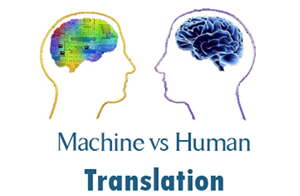 The 20th century was marked by a general and prodigious technological progress. Among the many fields that benefit from this progress, it is undoubtedly the computer that has the greatest impact on the world of translation profession. In the years after the digitization, data banks and especially Internet allow instant access to new terminology resources which, combined with the development of computer-aided translation software, completely transform the profession of translator.
The 20th century was marked by a general and prodigious technological progress. Among the many fields that benefit from this progress, it is undoubtedly the computer that has the greatest impact on the world of translation profession. In the years after the digitization, data banks and especially Internet allow instant access to new terminology resources which, combined with the development of computer-aided translation software, completely transform the profession of translator.
The continuous metamorphosis
 The phenomenon of globalization is generating a growing demand for translation, especially in administrative and specialized areas, and specialization has become much more important. With translation, globalization became possible, which in turn brought to light the language barrier, thus driving the demand for translation. In a market where borders tend to disappear, the translation, as a means of communication, is a constituent, integral part of how the phenomenon both operates and makes sense of itself.
The phenomenon of globalization is generating a growing demand for translation, especially in administrative and specialized areas, and specialization has become much more important. With translation, globalization became possible, which in turn brought to light the language barrier, thus driving the demand for translation. In a market where borders tend to disappear, the translation, as a means of communication, is a constituent, integral part of how the phenomenon both operates and makes sense of itself.

 SERVICES
SERVICES
 iran.rashidy@gmail.com
iran.rashidy@gmail.com  design: Andrés David Carrara
design: Andrés David Carrara The history of translation begins symbolically with the destruction of the legendary Tower of Babel so ending the universal language and the birth of different languages.
The history of translation begins symbolically with the destruction of the legendary Tower of Babel so ending the universal language and the birth of different languages.  Researchers mention that writings on translation go back to the Egyptian civilization and to Mesopotamian early as 3000 B.C.
Researchers mention that writings on translation go back to the Egyptian civilization and to Mesopotamian early as 3000 B.C.  A significant part of the history of translation in the West has to do with the translation of the scriptures. The first certified written translations are in fact those of the Bible. A changing step in translation development was marked by St Jerome (fourth century CE), translator of the Bible. Later on, the theories and practice of translation remained subject the pressure of the need to spread the Gospels
A significant part of the history of translation in the West has to do with the translation of the scriptures. The first certified written translations are in fact those of the Bible. A changing step in translation development was marked by St Jerome (fourth century CE), translator of the Bible. Later on, the theories and practice of translation remained subject the pressure of the need to spread the Gospels After the death of the prophet Muhammad in 632, the Arabs expanded in Europe and beyond, becoming the main custodians of Western culture. Eager for knowledge and the communication with non-Arabic speaking communities they encouraged translations of many Greek and Roman writings and add their knowledge in science. Many translation schools were established in Baghdad and Cordoba. Thanks to them, the knowledge of the antiques didn't disappear.
After the death of the prophet Muhammad in 632, the Arabs expanded in Europe and beyond, becoming the main custodians of Western culture. Eager for knowledge and the communication with non-Arabic speaking communities they encouraged translations of many Greek and Roman writings and add their knowledge in science. Many translation schools were established in Baghdad and Cordoba. Thanks to them, the knowledge of the antiques didn't disappear.  In the age of German Romanticism the problem of translating is both philosophical and intellectual. The direct experience as translators brings Goethe, Humboldt and Schleiermacher to regard translation as communication across cultures: the translator's language must adjust to the diversity of the original literary text.
In the age of German Romanticism the problem of translating is both philosophical and intellectual. The direct experience as translators brings Goethe, Humboldt and Schleiermacher to regard translation as communication across cultures: the translator's language must adjust to the diversity of the original literary text.  The age of the Enlightenment and the Industrial Revolution were marked by a proliferation of translations in all sectors, in particular technical and scientific. Many dictionaries monolingual and bilingual, general and special. The work of Champollion who in 1822 reveals the mysteries of the Rosetta Stone provided the key to the modern understanding of Egyptian hieroglyphics.
The age of the Enlightenment and the Industrial Revolution were marked by a proliferation of translations in all sectors, in particular technical and scientific. Many dictionaries monolingual and bilingual, general and special. The work of Champollion who in 1822 reveals the mysteries of the Rosetta Stone provided the key to the modern understanding of Egyptian hieroglyphics. The 20th century was marked by a general and prodigious technological progress. Among the many fields that benefit from this progress, it is undoubtedly the computer that has the greatest impact on the world of translation profession. In the years after the digitization, data banks and especially Internet allow instant access to new terminology resources which, combined with the development of computer-aided translation software, completely transform the profession of translator.
The 20th century was marked by a general and prodigious technological progress. Among the many fields that benefit from this progress, it is undoubtedly the computer that has the greatest impact on the world of translation profession. In the years after the digitization, data banks and especially Internet allow instant access to new terminology resources which, combined with the development of computer-aided translation software, completely transform the profession of translator.  The phenomenon of globalization is generating a growing demand for translation, especially in administrative and specialized areas, and specialization has become much more important. With translation, globalization became possible, which in turn brought to light the language barrier, thus driving the demand for translation. In a market where borders tend to disappear, the translation, as a means of communication, is a constituent, integral part of how the phenomenon both operates and makes sense of itself.
The phenomenon of globalization is generating a growing demand for translation, especially in administrative and specialized areas, and specialization has become much more important. With translation, globalization became possible, which in turn brought to light the language barrier, thus driving the demand for translation. In a market where borders tend to disappear, the translation, as a means of communication, is a constituent, integral part of how the phenomenon both operates and makes sense of itself.